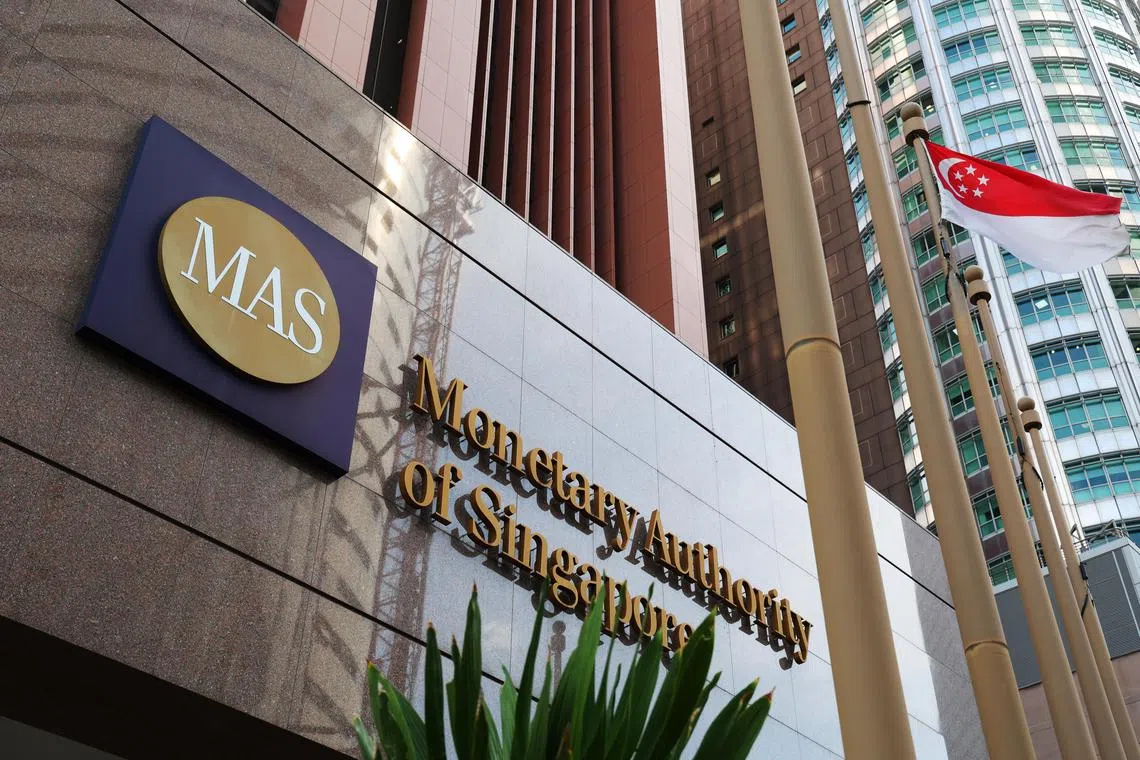Mortgage debt manageable for most S’pore households but interest rate shocks pose risks: MAS
Sign up now: Get ST's newsletters delivered to your inbox

Most households will be able to fund their ongoing expenditures including debt payments, said MAS in its Financial Stability Review 2022.
PHOTO: LIANHE ZAOBAO
Follow topic:
SINGAPORE - While most households should be able to service their mortgages, Singapore’s central bank on Friday urged borrowers to exercise prudence to cushion against rising interest rates and inflation.
As unemployment rates remain low
However, it warned that with rising interest rates
“Households should therefore exercise prudence in managing their finances, including mortgage loan obligations, to cushion against tightening financial conditions in the coming months,” it said in the report released on Friday.
Singapore households are facing higher borrowing costs as domestic interest rates have risen in tandem with global rates.
Still, the results of MAS’ stress tests show that most households appear to be resilient to income and interest rate shocks, and the proportion of non-performing mortgage loans is likely to remain low.
Mortgage rates for floating rate packages have risen to around 3.5 per cent and fixed rate packages to about 4.5 per cent this year, in line with a steep rise in Singapore dollar interbank interest rates.
The three-month compounded Singapore Overnight Rate Average (Sora), which is a key benchmark for mortgage rates, has increased from near-zero levels at the start of the year to about 2.6 per cent in mid-November.
“Market-based forward prices suggest that Sora-based mortgage rates could rise further in the coming months, before stabilising at levels that will still be significantly higher than the low rates seen in the last decade,” MAS said.
But even under the scenario of a simultaneous and immediate 4 percentage point increase in interest rates, and a 10 per cent reduction in income, most households are expected to be able to continue servicing their debts, MAS said.
Further detailed analysis by MAS showed households with larger outstanding mortgage loans – typically new borrowers – tend to be more leveraged and face greater risk of cash flow strains. Such households face even higher risks if they are of lower income with limited financial buffers such as cash and deposits.
Lower-income families typically spend most of their incomes on everyday expenditures.
Giving an overview of Singapore’s household balance sheet, MAS said net wealth rose by 7.5 per cent from 2021 to $2.5 trillion, with residential property assets contributing 5.3 percentage points to the overall 6.9 per cent gain in total household assets.
However, a jump in household expenditure with the easing of Covid-19-related restrictions lowered the personal savings rate to 35 per cent by the third quarter of 2022, from a peak of 40 per cent in the first quarter of 2021.
At the same time, household debt continued to grow, underpinned by sustained growth in housing loans. Mortgages accounted for 2.7 percentage points of the 3.1 per cent growth in household debt in the third quarter of 2022.
MAS noted though that outstanding housing loans have remained broadly stable in recent months, following the tightening of loan limits (total debt servicing ratio) at end-2021.
After dipping in the first quarter of 2022, new housing loans gradually picked up in subsequent quarters, mirroring rising sales and prices in the private residential property market. Private home prices have continued to rise in 2022
While transaction volumes fell in the first quarter of 2022 following the December 2021 cooling measures,
Housing rentals rose sharply as the vacancy rate fell. But MAS said the ramp-up in newly completed private residential units following the resumption of construction activity is expected to alleviate some tightness in the rental market.
About 28,800 private residential units, including executive condominium units, are expected to be completed over 2022-2023, nearly three times the 10,400 units in 2020-2021.
High inflation, rising rates and slowing economic growth worldwide also pose risks to Singapore’s corporate sector, MAS said.
While corporate vulnerability to shocks has grown slightly, firms here have sufficient liquidity reserves to cover short-term liabilities, it said. MAS said: “Leverage risk has eased as corporate sector debt as a share of GDP (gross domestic product) has fallen. Foreign currency mismatch risk has remained stable as Singapore firms continue to avoid over-reliance on foreign currency borrowings.”
Looking ahead, the macroeconomic risks for businesses are likely to continue in 2023.
In view of higher interest rates and slower growth, MAS said the debt servicing ability of firms could weaken somewhat in the coming quarters.
Still, the improvement in corporate profitability will help firms service their debts, with sufficient operating profits to cover their interest expenses.
MAS said its enhanced stress test suggests that Singapore companies as a whole would be resilient against more severe shocks.
However, highly leveraged firms should remain vigilant to downside risks amid the challenging macroeconomic environment, it said.
Meanwhile, banks continued to maintain strong capital and liquidity buffers as they expanded their lending in 2022.
However, MAS warned that economic uncertainties arising from elevated geopolitical tensions, supply chain disruptions and a strong US dollar could pose challenges to banks’ credit risk management.
It said: “Tightening financial conditions, amid some slowing in growth and higher costs, could weaken debt repayment capabilities of borrowers and adversely impact banks’ asset quality.
“It is thus important for banks to actively monitor loans extended to vulnerable borrowers and ensure that their provisioning coverage is sufficient.”


